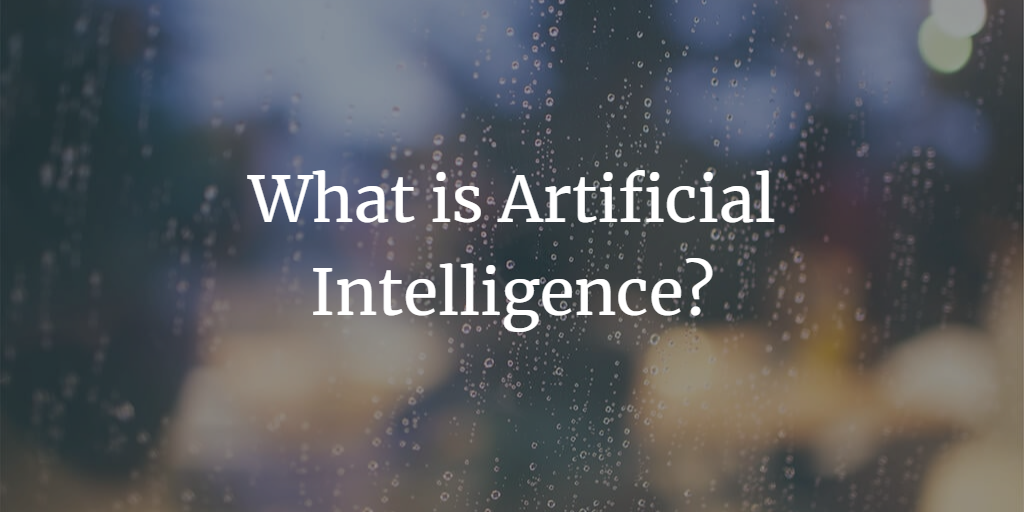What is Artificial Intelligence? And Why Should You Care?

Table of Contents
Introduction
What is Artificial Intelligence?
Types of Artificial Intelligence
Narrow AI
General AI
Superintelligent AI
Key AI Technologies and Techniques
Machine Learning
Deep Learning
Natural Language Processing
Computer Vision
Why Should You Care?
AI in Daily Life
AI in Business
AI and the Future
Conclusion
1. Introduction
Artificial Intelligence (AI) has become an increasingly popular topic in recent years, and its applications have permeated various industries, transforming the way we live and work. This article will provide an overview of AI, its types, key technologies, and why it's essential to understand this groundbreaking field.
2. What is Artificial Intelligence?
Artificial Intelligence (AI) refers to the development of computer systems that can perform tasks typically requiring human intelligence, such as learning, problem-solving, perception, and understanding natural language. It aims to create machines that can think, learn, and adapt to various situations, ultimately making our lives easier and more efficient.
3. Types of Artificial Intelligence
AI can be categorized into three main types based on its capabilities: Narrow AI, General AI, and Superintelligent AI.
3.1. Narrow AI
Narrow AI, also known as weak AI, is designed to perform specific tasks without possessing human-like intelligence. Examples include language translation apps, voice assistants like Siri and Alexa, and recommendation algorithms used by streaming services. These systems are task-specific and cannot perform functions beyond their programming.
3.2. General AI
General AI, or strong AI, refers to a system that possesses human-like intelligence and can perform any intellectual task that a human being can do. While this type of AI remains a theoretical concept, it represents a significant goal for many AI researchers and developers.
3.3. Superintelligent AI
Superintelligent AI is an advanced form of AI that surpasses human intelligence in virtually every aspect. This type of AI does not exist yet but has been a popular subject in science fiction and academic discussions, raising concerns about its potential impact on society and the human race.
4. Key AI Technologies and Techniques
Several technologies and techniques are essential to the development of AI systems, including machine learning, deep learning, natural language processing, and computer vision.
4.1. Machine Learning
Machine learning is a subset of AI that enables computers to learn from data without being explicitly programmed. It uses algorithms to analyze data, identify patterns, and make predictions or decisions. Machine learning has applications in various fields, including finance, healthcare, and marketing.
4.2. Deep Learning
Deep learning is a more advanced subset of machine learning that uses artificial neural networks to model complex patterns and representations in data. These neural networks are inspired by the human brain and consist of multiple layers that process information in a hierarchical manner. Deep learning is particularly effective in tasks like image and speech recognition.
4.3. Natural Language Processing
Natural Language Processing (NLP) is a subfield of AI that focuses on enabling computers to understand, interpret, and generate human language. NLP combines linguistics, computer science, and machine learning to develop algorithms that can analyze and derive meaning from text and speech. It has applications in chatbots, sentiment analysis, and language translation.
4.4. Computer Vision
Computer vision is an AI discipline that teaches computers to interpret and understand the visual world. It involves the development of algorithms that can process, analyze, and extract information from digital images and videos. Applications of computer vision include facial recognition, self-driving cars, and medical imaging.
5. Why Should You Care?
AI is rapidly transforming various aspects of our lives, from our daily routines to the way businesses operate.
5.1. AI in Daily Life
AI-powered devices and applications have become increasingly common in our daily lives. From voice assistants to personalized recommendations on streaming platforms, AI is enhancing our experiences and making our lives more convenient.
5.2. AI in Business
AI is revolutionizing the way businesses operate, providing valuable insights, automating mundane tasks, and improving decision-making processes. AI-powered tools can help companies optimize their operations, enhance customer experiences, and stay competitive in the ever-evolving market landscape.
5.3. AI and the Future
As AI continues to advance, it will likely play an even more significant role in our lives and the global economy. Understanding AI and its potential impact is crucial for individuals, businesses, and governments to adapt to this rapidly changing landscape and harness the benefits it can offer.
6. Conclusion
Artificial intelligence is a rapidly evolving field that has the potential to reshape our lives and the world we live in. Understanding AI, its various types, and the underlying technologies and techniques is essential for individuals and organizations alike. By staying informed and adapting to the ongoing changes brought about by AI, we can unlock its potential and create a better future for all.


